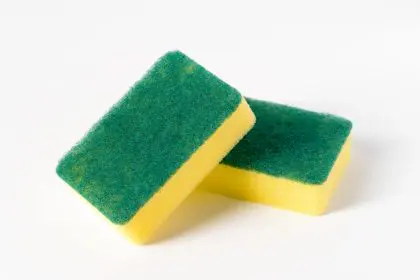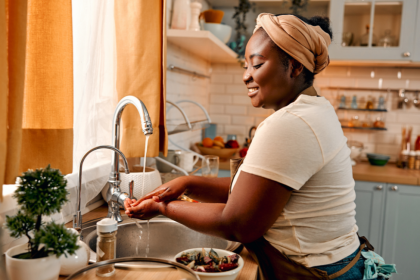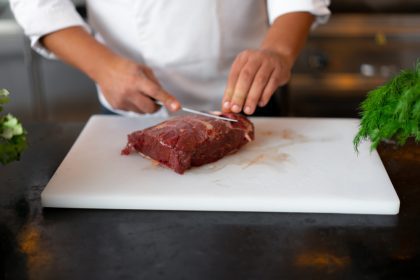The surge in home cooking has brought both joy and unexpected challenges to kitchens across the country. While preparing meals at home can be healthier and more cost-effective, it also comes with responsibilities that many home cooks might overlook. Understanding crucial safety practices could mean the difference between a delicious meal and an unfortunate bout of food poisoning.
The hidden dangers in your kitchen routine
Your kitchen might look spotless, but dangerous bacteria could be lurking in places you’d never expect. From seemingly clean dishcloths to improperly stored leftovers, these common oversights can turn your healthy home-cooked meal into a source of foodborne illness. The good news? Prevention is surprisingly simple when you know what to watch for.
Master the art of hand hygiene
The foundation of food safety starts before you even touch any ingredients. While most people know they should wash their hands, many don’t do it properly. Spend at least 20 seconds washing with warm water and soap, making sure to clean between fingers and under nails. Think that’s too long? Try humming the “Happy Birthday” song twice – that’s your target duration.
Even more important is knowing when to wash. Beyond the obvious times like after using the bathroom or handling raw meat, you should also wash up after touching your phone, adjusting your hair, or handling garbage. These moments of cross-contamination often go unnoticed but can introduce harmful bacteria to your food.
Create a safer workspace
Your cutting board and countertops might be hiding more germs than you think. Start each cooking session with a clean slate by sanitizing all preparation surfaces with hot, soapy water or a food-safe sanitizing solution. Keep a spray bottle of sanitizer handy for quick cleanups between tasks.
Professional kitchens maintain a “clean as you go” policy for good reason. Having a sink of hot, soapy water ready during meal prep isn’t just about convenience – it’s about maintaining a safe cooking environment throughout the entire process. This practice helps prevent bacterial spread and makes final cleanup much more manageable.
Tackle the towel trouble
Those kitchen towels you use throughout the day could be your biggest food safety mistake. A towel that looks clean can harbor millions of bacteria, especially if it’s damp. The solution? Rotate your kitchen linens daily, not weekly. Use separate towels for hand-drying and dish-drying to prevent cross-contamination.
When washing kitchen towels, hot water is crucial. The water temperature should be at least 140°F (60°C) to effectively kill bacteria. Adding a sanitizing agent to your wash can provide extra protection. Consider keeping a stack of clean towels readily available so you’re never tempted to use one past its prime.
Prevent dangerous cross-contamination
The practice of using separate cutting boards for different food types isn’t just professional kitchen fussiness – it’s a crucial safety measure. Raw meat can leave behind bacteria that regular washing might miss, and these organisms can contaminate other foods even days later.
Consider implementing a color-coding system in your kitchen: designate specific boards for raw meat, vegetables, and ready-to-eat foods. This system, used in professional kitchens worldwide, can help prevent dangerous mix-ups. If space or budget constraints make multiple boards impossible, always prepare vegetables before handling raw meat, and sanitize your board thoroughly between uses.
Master the art of leftover storage
The “danger zone” for food temperature lies between 40°F and 140°F (4°C to 60°C), where bacteria multiply rapidly. That’s why quick cooling of leftovers is essential. Breaking down large portions into smaller containers can help food cool faster and more evenly.
When storing leftovers, organization matters as much as temperature. Place them in clear containers with labels showing the contents and date. Use the “first in, first out” principle, and position newer items behind older ones in your refrigerator. This simple practice helps ensure you use food while it’s still safe to eat.
Creating a food safety culture at home
Developing these habits might seem overwhelming at first, but they quickly become second nature. Consider creating a kitchen safety checklist and posting it somewhere visible. This visual reminder can help everyone in the household maintain these important practices.
Making it work in real life
The key to maintaining food safety isn’t perfection – it’s consistency. Start by implementing one new habit at a time. Focus on proper hand washing for a week, then add in the cutting board system the next. Small, sustainable changes are more likely to stick than trying to overhaul your entire kitchen routine at once.
The bigger picture of kitchen safety
Food safety isn’t just about avoiding illness – it’s about creating a kitchen environment that supports your family’s health and well-being. When you consider that foodborne illnesses affect millions of people each year, these preventive measures become even more crucial.
By incorporating these safety practices into your daily routine, you’re not just protecting yourself and your family from food poisoning. You’re also developing professional-level cooking habits that will make your home kitchen run more efficiently and produce consistently better meals. After all, the most delicious food is the kind that keeps you healthy and happy long after the meal is over.

















